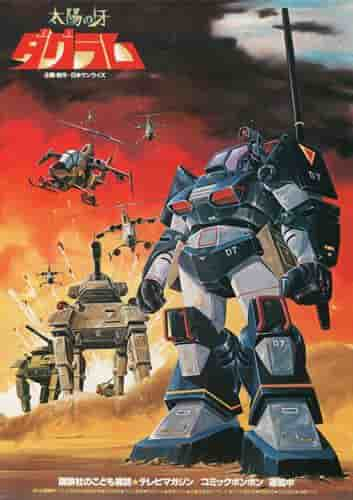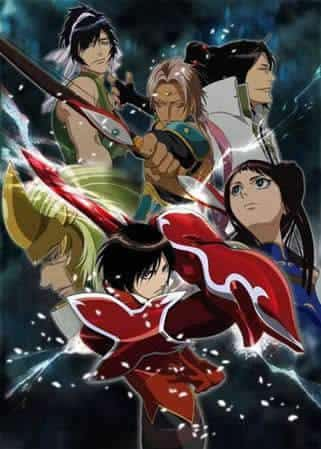Fang of the Sun Dougram: A review that looks into the appeal of the mecha design and story

Fang of the Sun Dougram: A grand drama where politics and the military intersect■Overview of the workFang of the Sun Dougram is a robot anime series that aired on TV Tokyo from October 23, 1981 to March 25, 1983. It is a feature-length work with a total of 75 episodes, making it the longest-running original work by Sunrise. It was directed by Kanda Takeyuki and Takahashi Ryosuke, based on the original work by Takahashi Ryosuke and Hoshiyama Hiroyuki, and produced by Nippon Sunrise. The work features strong political themes and military elements, and is characterized by a story development that deeply moves viewers and provokes thought. ■ StoryThe story begins when Donan Kassim, chairman of the Earth Federation Council, gets caught up in a political upheaval on the colony planet Deloire. His son Krin travels to Deloire to rescue his father. His father is safely released and the mastermind behind the upheaval is captured, but Krin learns the truth about Deloire and begins to question his father's policies. Dr. Samarin, the leader of the guerrillas, appoints Krin to pilot Dougram, the symbolic weapon of Deloire's liberation. Krin makes up his mind, recaptures Dougram, which has been seized by the federal forces, and escapes from the capital, Cardinal, with his comrades. They then launch guerrilla operations that appear and disappear out of nowhere to counter the tyranny of the federal forces. Meanwhile, newspaper reporter Raltarf continues to pursue them in search of the truth behind the turmoil. ■ExplanationFang of the Sun Dougram is the first robot anime directed by both Takahashi Ryosuke and Kanda Takeyuki, and is a work with strong political and military themes. The story depicts the conflict between Donan, a politician who is devoting his life to maintaining the Federation, and his son Krin, who fights in the liberation war for equal independence for Deloya. Donan holds up lofty ideals, while Samarin appeals for the people's current happiness to be given top priority. Under their control, those who flock to vested interests and those poisoned by power act with various motives. This overwhelming drama has been very popular for its intense development and hard-edged depictions, and the broadcast period has been extended to six seasons, the longest for a standalone Sunrise original work. ■Cast
■ Main staff
■Subtitle
■ Appeal and evaluation of the workThe greatest appeal of Fang of the Sun Dougram is its story development, which intertwines political themes with military elements. In particular, the gap between ideals and reality depicted through the conflict between father and son deeply moves viewers and provokes thought. Also noteworthy is the fact that the robot Dougram is not just a fighting machine, but is depicted as a symbol of liberation. This work is unique among Sunrise's robot anime, and its rigid depictions and hard-hitting plot left a strong impression on viewers. The characters are also portrayed very realistically, with their individual thoughts and conflicts carefully drawn. The story progresses from multiple perspectives, such as the relationship between Klin and Samarin, and the truth of the turmoil seen from the perspective of newspaper reporter Raltarf, allowing viewers to become even more immersed in the work. Furthermore, the design of Dougram by mechanical designer Kunio Okawara can be said to be a pioneer of real robot anime, and its detailed settings and movements have been highly praised by fans. The powerful sound of the music by Toru Fuyuki also livened up the story and captured the hearts of viewers. ■ Recommendation pointsI highly recommend "Fang of the Sun Dougram" to anyone who wants to enjoy a grand drama where politics and the military intersect. It is especially a must-watch for fans of realistic robot anime and those looking for a work with deep themes. It is also an important work in understanding the history of Sunrise, so I would recommend it to anyone interested in the background and behind-the-scenes stories of the production. Furthermore, even though this work is a long series of 75 episodes, each episode has a different perspective and development, so you can enjoy it for a long time. In particular, the depiction of the ideological conflict between Klin and Samarin and the guerrilla activities against the tyranny of the federal army give the viewer many suggestions. Lastly, this work is the longest-running original work by Sunrise, and its quality and storytelling are still loved by many fans. Please watch it and experience its charm for yourself. |
<<: "Flower Chief": A thorough analysis of the fascinating characters and the depth of the story
>>: The appeal and evaluation of the Urusei Yatsura TV version: A deep review of the series
Recommend
Douban scored 8.8 points! The director's cut of Justice League is online today. Zheng Kai shared a photo with Zack Snyder
Today (March 18), the director's cut of Justi...
Universal's new film "Trolls 2" sets a record for foreign film online on-demand downloads
According to Deadline, due to the impact of the C...
Digimon Adventure tri. Chapter 2 "Determination" Review: A story of growth and determination
Digimon Adventure tri. Chapter 2 "Determinat...
Famous director Martin Scorsese continues to criticize Marvel: We can't let young people think that the cinema is an amusement park
Recently, Martin Scorsese, a famous director who ...
The dynamic poster of the game-adapted movie "Zhengtu" has been released and is now available on iQiyi
Today (July 24), the dynamic poster of the game-a...
The second season of the popular TV animation "Rent-a-Girlfriend" has been confirmed and the teaser trailer has been released
The first season of the popular TV animation &quo...
Masato Sakai compared "Doraemon" to "Hagane Naoki", 80% Fat Tiger, 10% Suneo and 10% Nobita
The super popular Japanese drama "Hanzawa Na...
The official trailer of the thriller "Hold Your Breath 2" starring Colonel "Avatar"
The horror thriller "Don't Breathe 2&quo...
"The Last of Us" special episode: The thrilling journey of survival is about to begin
Recently, the official series of "The Last o...
Cavill made himself dirty while filming The Witcher to restore his image of Geralt
In a recent interview with Vanity Fair, Henry Cav...
"Toji no Miko" recitation drama project releases new content after TV animation
Today (January 5), the official website of "...
Report: 'League of Legends: War of Two Towers' is the most expensive animated series ever, costing around $250 million
The second season of "League of Legends: War...
NEXON mobile game "Blue Files" announced that the game will launch TV animation
The official mobile game "Blue Archive"...
"The Shape of Happiness" Review: A moving story and deep characters
The full story and appeal of "The Shape of H...
The appeal and reviews of Blue Lock: A deep look at the series and the first TV episode
Blue Rock: An egoistic soccer revolution "Bl...









